Introduction
So, I have been visiting Panama since before I could swim and that was a long time ago. In 1966 we took a family trip to visit my Aunt, Uncle and cousins who were living in Bocas del Toro at the time. Much more on this point in future blogs of this series.
Twenty-five years later, I made my first trip as an adult and have been coming quite regularly ever since. You see, the aforementioned uncle became a landowner and resident in Panama and my father later followed him to retire to Bocas del Toro.
But here is the thing, in all my trips to Panama, and some were several months long, I only ever spent time in Bocas del Toro and Panama City. I needed to see the rest of this beautiful country that is now a second home to me.
In this blog and future blogs, I will be sharing with you my 4 week expedition of birding through Panama and then give an assessment of the birding around my home in Bocas del Toro.
Birding Panama City
If you are an avid birder, then nothing will distract you from finding birds. Not even a metropolis of 2,000,000 people.
Panama City sits on the Pacific Coast of Panama at one end of the Panama Canal.
An interesting bit of trivia regarding the Panama Canal is that the Pacific entry to the canal is farther east than the Atlantic entry….think about that….look at a map….now you know.
Metropolitan Park of Panama City
I think everyone will tell you that the best place to go birding in Panama City is the Metropolitan Park. Its birding is well documented. There are numerous trails for you to explore the park. There is a small entrance fee and a bus stop at the visitor center if you do not have a car and don’t mind using public transport. I did not bird the park. Maybe next time.
So let’s talk about where I did bird.
Birding Old Panama City - Casco Viejo
Most visitors to Panama City will stroll the old brick streets of the restored Casco Viejo. The colors and the architecture transport you back to the long-gone period of colonialism. Go early. It can be sweltering as a breeze is hard to find in the tight maze of streets. The brick and mortar soak-up and reflect the persistent rays of the sun. Did I say hot? There are many iconic spots to visit: plazas, churches, rooftop bars, etc!
While certainly not iconic, a unique experience when birding Panama City is to go to the southeast point of Casco Viejo and peer out onto the rock formations below the city walls. You must have at least binoculars and preferably a spotting scope to have any hope of sorting through the peeps. In a matter of minutes, I counted 11 different waders, four herons, gulls, terns and others. Also, inspect the beaches and large trees on the south side of Casco Viejo for more activity including a lifer Common Tody-Flycatcher that left a deposit on my shirt and luckily not my face as I was looking straight up at it. Totally worth it! It was a very rewarding stop and one that I will repeat each visit.
Birding Panama City - Pants Park
AWKWARD STORY WARNING: This section is less about birding Panama City and more about something else, skip the following two paragraphs if you are not interested.
After leaving Casco Viejo, we decided to stroll through Maria Carter Pantalones park (what a name, perhaps translated to Mary Carter’s pants??) towards the Amador Causeway. There are certainly better places to bird Panama City, but this may be worth a try. While the birding here was ok, it was not as fruitful as I had hoped. Maybe it was just overshadowed by what I am about to write. Southern Lapwing, Yellow Warbler, Saffron Finch, Green Heron and a few others cannot compare to the sighting between Casco Viejo and the south return of the Cinta Costera.
What was it, a black coconut, an oddly shaped log floating 50’ out into the sea? As we walked closer, my worst fear became reality. We were looking at a corpse floating in the water with only the top of his head above the waterline. The clarity of the water made the rest of the form visible. I immediately looked around for some form of authority that could take-over the ownership of this situation from me.
Not far from the body was a group of officers enjoying the shade thrown by the Cinta Costera’s return to shore. In my far from perfect Spanish, I approached them and said “Hay un cuepo en la agua, muerto!” They stood up and looked at each other. I could read their minds: “Does this gringo know what he is saying?” Yes, I did, and I pointed and walked. They followed. They got rather animated upon seeing the body and immediately got on their radios. I slowly crept away reminiscent of Carl Spackler (Bill Murray) sneaking off after blowing up the golf course at the end of Caddyshack.
Two hours later we walked back through the scene to find a police boat in the water, a dozen officers on shore, a barricade and the media. Surprisingly and luckily no one cared to get our statement. I will always wonder why that young man lost his life.
Does Isla Taboga Count as Birding Panama City?
A day trip to Isla Taboga is worth your time. Plan to leave on the first boat (8:00am) and return on the last (4:00pm). It takes about 30 minutes to get to the island. Take swimsuits and a towel. Enjoy the day. We used Taboga Express Fast Ferry service which is located on Flamenco Island at the end of the Amador Causeway. We only purchased for ferry service. There are other packages to include tours and lunch that you may consider.
Spoiler alert: I did not bring my camera on this trip. Why? I don’t know. My single biggest regret of the entire Panama adventure to date. There were at least four birds that I could have photographed that I did not get another chance as of this writing.
Blue-footed Boobies were spotted and followed the boat to the island along with Brown Boobies and other seabirds. Great photo opportunities missed, but enough sulking.
Some Isla Taboga fun facts are: It’s the probable birthplace of the first Catholic saint born in the new world. It claims to have the second oldest church in the western hemisphere. Paul Gaugin was treated on the island after becoming ill while visiting the attempted French construction of a trans-isthmus canal.
Walking the narrow street(s) of the town of San Pedro can be hummingbird productive. The residents pride themselves on landscaping and particularly flowering shrubs. A common nickname of Taboga is Island of Flowers. The residents do their part to respect the nickname. I got my lifer Garden Emerald here.
After leaving town we walked the trail to Vigilant Bunker. Take water. It will be hot and there is nowhere else to get water once you leave town. It is a good walk up to the viewpoint with lots of bird sounds to chase down. A word of warning, you will have to walk right through the island landfill. It stinks horribly but you will get some good looks at Black Vulture, the most dominant bird of the Panama skies.
Once at the end of the trail, you will be treated to some truly breathtaking views. Take a seat, eat whatever snacks you have brought and enjoy. These are 5-star views and I am not exaggerating.
Another popular hike is the walk up to Cerro de la Cruz. As we were hungry for a real meal, the trail was bypassed.
Walking to the right when exiting the ferry can be productive. We walked back to Piedra Llana Beach. We did a little jungle exploring when we saw trails and got good views of other birds. Honestly, I saw some small flycatcher types that, today, I could probably identify, but at the time did not know the best field marks to look for and (no surprise) without my camera, I could not review later. I suspect they may have been Yellow-crowned Tyrannulet, Greenish and Lesser Elaenia and/or Southern Beardless Tyrannulet. These are the most common little flycatchers on Taboga.
Common birds on the island that were lifers for me were Panama Flycatcher, Yellow-bellied Seedeater, Garden Emerald, Plumbeous Kite, Streaked Saltator, and Gray-breasted Martin. I must have an affinity for raptors because I cannot recall being more excited for a new bird as when I saw the translucent rufous color of the Plumbeous Kite coming through the wings of what might otherwise be just another Oklahoma breeding Mississippi Kite. Also in abundance were Yellow-bellied Elaenia, Dusky-capped Flycatcher, Crimson-backed Tanager, Blue-gray Tanager, and others.
This excursion feels less like birding Panama City and more like birding a tropical isle.
Cerro Ancon, A Little Birding Paradise in a Big City
Cerro Ancon is noteworthy for several reasons: It is the highest natural point within the city limits and was a vista for Capt. Morgan to survey the area after sacking the city in 1671. It is part of the land annexed to create the canal zone and served as the Southern Command HQ. The first ship to transit the Panama Canal was named after it. Following the return of the hill to Panama in 1977 the huge Panamanian flag was proudly raised atop the hill. The flag is a bearing marker that can be seen from all locations in and around the city.
Birding the hill can be one of the most rewarding and easily accessible outings you can have in the city. The taxi can take you to the base of the hill and the rest you must do on your own. Arrive as early as possible after daybreak to avoid the heat and have the best experience. It is its own little jungle ecosystem in the middle of high-density living. You will encounter many other fitness and nature enthusiasts on the trail (think, safety in numbers). The path to the top is a paved road which is now restricted to pedestrians. Fantastic! And the grounds are a protected wildlife area. Double fantastic! Great job Panama for preserving this terrarium of a park!
In addition to birds there are butterflies, reptiles, sloths, monkeys, coatis and armadillos. Don’t even get me started on the orchids and bromeliads.
We observed 27 bird species on the walk. Top finds for me were the White-throated Wood Wren, Isthmian Wren, Keel-billed Toucan, Piratic Flycatcher, Streaked Flycatcher and Squirrel Cuckoo. Also, some migrants were already at play in their wintering grounds including Red-eyed Vireo, Black-and-White Warbler and Olive-sided Flycatcher.
To summarize, this is a don’t miss, must do location when birding Panama City.
Birding Panama City - Costa del Este
I would like to mention one other area in the city that can be rewarding for birding. If you are staying in the Costa del Este area there is some good birding opportunities within walking distance. The park on the west side of Calle Rio del Mar is a lovely city park. I remember picking up my lifer Saffron Finch in this park only to find out later that it is an introduced species and is thriving in the city.
There is a nice sidewalk between the mangrove habitat and the Avenida Paseo del Mar. It even has a couple of viewing points to look out onto the flats for wader types. A spotting scope would be very helpful in this situation.
The Conclusion
Don’t let skyscrapers and traffic jams get your birding enthusiasm down while spending time in the city. Enjoy all the city has to offer and remember there will always be a place for birds (more than pigeons and sparrows) to congregate.
Next up we go to the former Canal Zone for some of the most talked about birding in the world. Will Pipeline Road live up to the hype? See you soon.

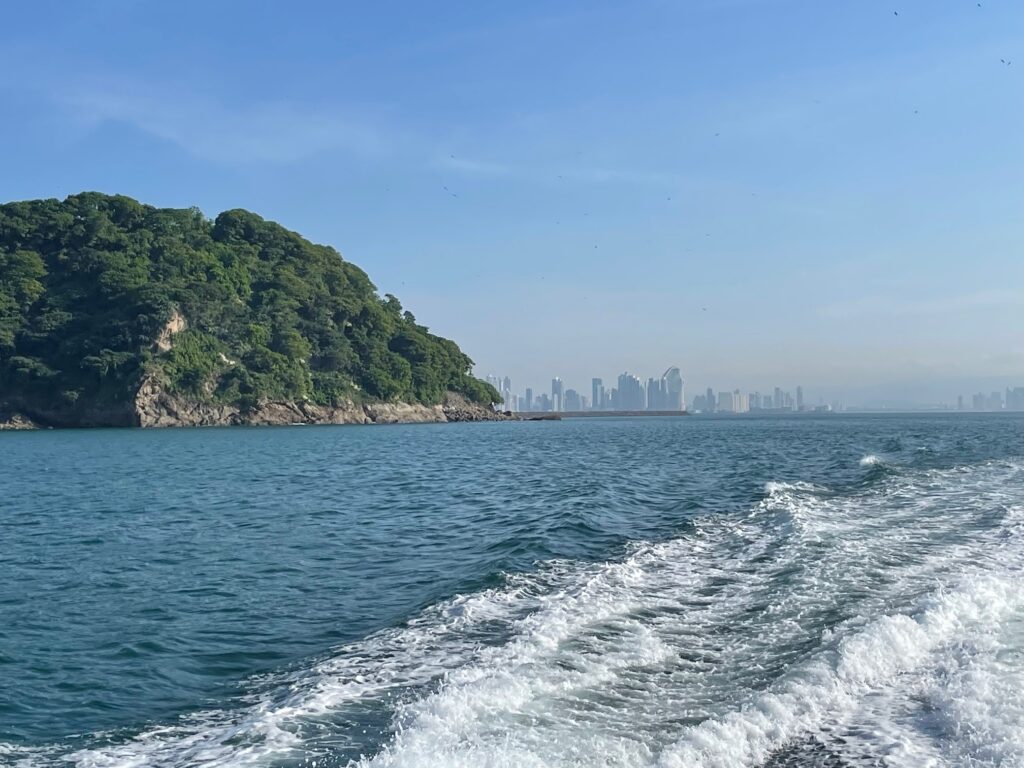
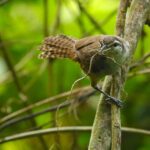
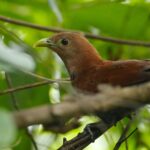
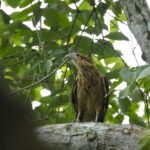
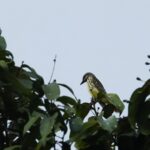
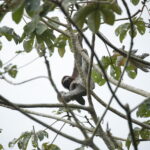
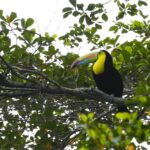
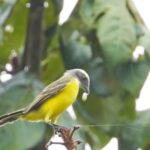
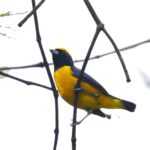
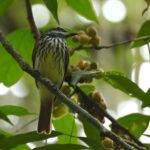
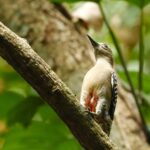
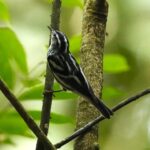
Joel, you let birders know what is worth seeing in this metropolitan megalopolis. Ancon Hill is so peaceful and quiet that you cannot believe there is a crazy traffic pattern just below you in all directions. On the top of the hill, untold millions of migrants pass in front of you in September and October; then return in February and March back from South America. It is gratifying to see dedicated Panamanian birders so involved and dedicated–a good sign for nature in Panama.
A few years ago, a taxi would take me right to the top of the hill and then leave; then I would walk down. Old rascals like me can’t walk to the top anymore, which deprives me of the joys of Ancon Hill.
I know you will continue this blog with more exciting accounts. If you did not go to Summit Gardens, I recommend a trip there next time just for birding, plus other interests. Clyde Stephens
Pingback: Birding Around Gamboa - Part 2 of Birding Panama - Birding Escapes
Towards the end of reading this blog, I forgot I was reading about birding in a metropolitan city! Quite impressive!